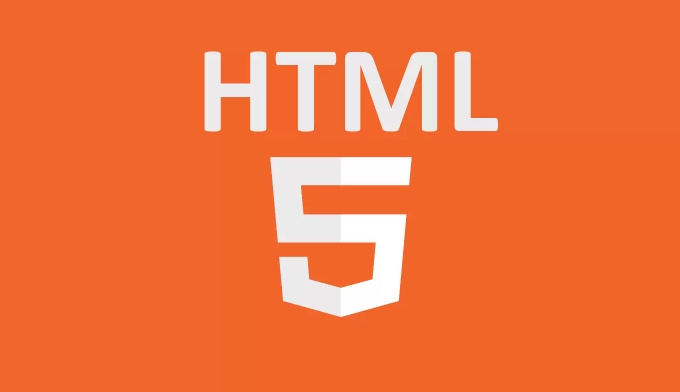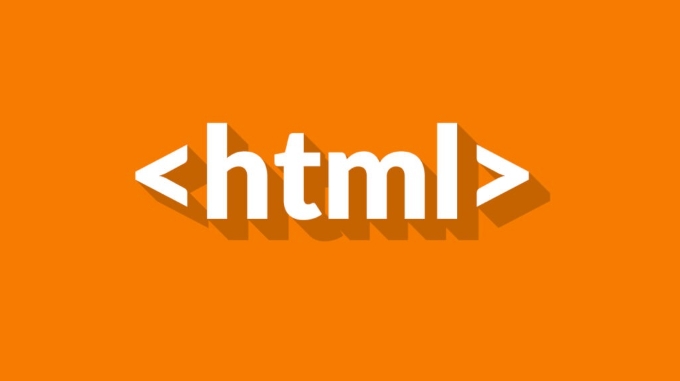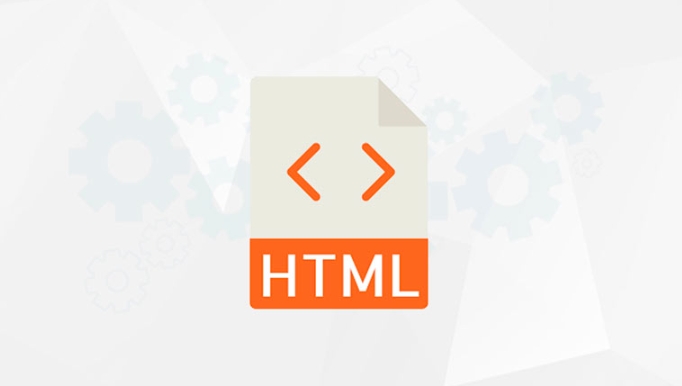How to use the formmethod and formtarget attributes in HTML
Aug 01, 2025 am 06:46 AMFormmethod and formtarget are attributes used in HTML to control form submission behavior. 1. Formmethod is used to specify the HTTP method (get or post) at the time of submission, which can overwrite the method attribute of the form. It is suitable for scenarios where different buttons in the same form need to use different submission methods; 2. Formtarget is used to specify the location where the response result is displayed, and can overwrite the target attribute of the form. Common values include _self, _blank, etc., which are suitable for opening results in a new tab without losing the current page data; 3. Both can be applied to the same submit button at the same time, realizing functions such as "previewing in a new tab page in a GET"; 4. Even if the button is outside the form, the form can be associated and effective through the form attribute. These properties can enhance form interaction flexibility without JavaScript, ultimately providing a richer user operation experience.

The formmethod and formtarget attributes in HTML are useful for controlling how a form is submitted, even when the submit button is nested inside a form or used outside of one. These attributes are added directly to a <button></button> or <input type="submit"> element and override the parent <form></form> 's settings temporarily. Let's break down how and when to use them.

What is formmethod ?
The formmethod attribute specifies the HTTP method ( get or post ) to use when submitting a form. It overrides the method attribute of the <form></form> element.
This is helpful when you want different buttons in the same form to use different submission methods.

Common use case:
You might have a form where one button submits data normally ( POST ), while another button just previews the data using a GET request.
<form action="/submit" method="post"> <input type="text" name="username" /> <button type="submit">Submit (POST)</button> <button type="submit" formmethod="get">Preview (GET)</button> </form>
In this example:

- Clicking "Submit (POST)" sends a
POSTrequest to/submit. - Clicking "Preview (GET)" sends a
GETrequest to/submit?username=..., appending the data to the URL.
? Key point:
formmethodonly works on submit buttons (<button type="submit">or<input type="submit">).
What is formtarget ?
The formtarget attribute specifies where to display the response after form submission. It overrides the target attribute of the <form> .
It's especially useful for opening results in a new tab, an iframe, or suppressing navigation.
Values for formtarget :
-
_self(default): Load in the same window/tab. -
_blank: Open in a new tab or window. -
_parent: Load in the parent frame. -
_top: Load in the full body of the window. -
framename: Load in a specific iframe by name.
Example:
<form action="/download-report" method="post"> <button type="submit">Download (Same Tab)</button> <button type="submit" formtarget="_blank">Open in New Tab</button> </form>
Now, the second button opens the download or response in a new tab without leaving the current page.
? Practical use: This is great for reports, PDF previews, or external actions where you don't want users to lose their current form data.
Using Both Together
You can combine formmethod and formtarget on the same button:
<button type="submit"
Formmethod="get"
formtarget="_blank">
Preview in New Tab
</button> This sends a GET request and opens the result in a new tab — ideal for safe, non-destructive previews.
Using Outside a Form
These attributes also work when the button is outside the <form> but points to it via the form attribute:
<form id="myForm" action="/submit" method="post">
<input type="text" name="email" />
</form>
<button type="submit"
form="myForm"
Formmethod="get"
formtarget="_blank">
Preview with GET in new tab
</button>This gives you full control even when structuring forms across different parts of a layout.
Summary
-
formmethodoverrides the form's HTTP method (getorpost) per-button. -
formtargetcontrols where the response opens (eg, new tab with_blank). - Both attributes only work on submit buttons.
- They're great for adding flexible actions like preview, export, or safe submissions without JavaScript.
Basically, they give you more control over form behavior right in HTML — no extra scripts needed.
The above is the detailed content of How to use the formmethod and formtarget attributes in HTML. For more information, please follow other related articles on the PHP Chinese website!

Hot AI Tools

Undress AI Tool
Undress images for free

Undresser.AI Undress
AI-powered app for creating realistic nude photos

AI Clothes Remover
Online AI tool for removing clothes from photos.

Clothoff.io
AI clothes remover

Video Face Swap
Swap faces in any video effortlessly with our completely free AI face swap tool!

Hot Article

Hot Tools

Notepad++7.3.1
Easy-to-use and free code editor

SublimeText3 Chinese version
Chinese version, very easy to use

Zend Studio 13.0.1
Powerful PHP integrated development environment

Dreamweaver CS6
Visual web development tools

SublimeText3 Mac version
God-level code editing software (SublimeText3)

Hot Topics
 The `` vs. `` in HTML
Jul 19, 2025 am 12:41 AM
The `` vs. `` in HTML
Jul 19, 2025 am 12:41 AM
It is a block-level element, used to divide large block content areas; it is an inline element, suitable for wrapping small segments of text or content fragments. The specific differences are as follows: 1. Exclusively occupy a row, width and height, inner and outer margins can be set, which are often used in layout structures such as headers, sidebars, etc.; 2. Do not wrap lines, only occupy the content width, and are used for local style control such as discoloration, bolding, etc.; 3. In terms of usage scenarios, it is suitable for the layout and structure organization of the overall area, and is used for small-scale style adjustments that do not affect the overall layout; 4. When nesting, it can contain any elements, and block-level elements should not be nested inside.
 Specifying Character Encoding for HTML Documents (UTF-8)
Jul 15, 2025 am 01:43 AM
Specifying Character Encoding for HTML Documents (UTF-8)
Jul 15, 2025 am 01:43 AM
To correctly set the character encoding of the HTML document to UTF-8, you need to follow three steps: 1. Add at the top of the HTML5 part; 2. Configure the response header Content-Type: text/html; charset=UTF-8, if Apache uses AddDefaultCharsetUTF-8, Nginx uses charsetutf-8; 3. Select the UTF-8 encoding format when saving HTML files in the editor. These three links are indispensable, otherwise it may lead to garbled page code and failure of special character parsing, affecting user experience and SEO effect. It is important to ensure that HTML declaration, server configuration and file saving are consistent.
 Essential HTML Tags for Beginners
Jul 27, 2025 am 03:45 AM
Essential HTML Tags for Beginners
Jul 27, 2025 am 03:45 AM
To get started with HTML quickly, you only need to master a few basic tags to build a web skeleton. 1. The page structure is essential, and, which is the root element, contains meta information, and is the content display area. 2. Use the title. The higher the level, the smaller the number. Use tags to segment the text to avoid skipping the level. 3. The link uses tags and matches the href attributes, and the image uses tags and contains src and alt attributes. 4. The list is divided into unordered lists and ordered lists. Each entry is represented and must be nested in the list. 5. Beginners don’t have to force memorize all tags. It is more efficient to write and check them while you are writing. Master the structure, text, links, pictures and lists to create basic web pages.
 Shadow DOM Concepts and HTML Integration
Jul 24, 2025 am 01:39 AM
Shadow DOM Concepts and HTML Integration
Jul 24, 2025 am 01:39 AM
ShadowDOM is a technology used in web component technology to create isolated DOM subtrees. 1. It allows the mount of an independent DOM structure on ordinary HTML elements, with its own styles and behaviors, and does not affect the main document; 2. Created through JavaScript, such as using the attachShadow method and setting the mode to open; 3. When used in combination with HTML, it has three major features: clear structure, style isolation and content projection (slot); 4. Notes include complex debugging, style scope control, performance overhead and framework compatibility issues. In short, ShadowDOM provides native encapsulation capabilities for building reusable and non-polluting UI components.
 Can you put a tag inside another tag?
Jul 27, 2025 am 04:15 AM
Can you put a tag inside another tag?
Jul 27, 2025 am 04:15 AM
?Youcannotnesttagsinsideanothertagbecauseit’sinvalidHTML;browsersautomaticallyclosethefirstbeforeopeningthenext,resultinginseparateparagraphs.?Instead,useinlineelementslike,,orforstylingwithinaparagraph,orblockcontainerslikeortogroupmultipleparagraph
 Why is my image not showing up in HTML?
Jul 28, 2025 am 02:08 AM
Why is my image not showing up in HTML?
Jul 28, 2025 am 02:08 AM
Image not displayed is usually caused by a wrong file path, incorrect file name or extension, HTML syntax issues, or browser cache. 1. Make sure that the src path is consistent with the actual location of the file and use the correct relative path; 2. Check whether the file name case and extension match exactly, and verify whether the image can be loaded by directly entering the URL; 3. Check whether the img tag syntax is correct, ensure that there are no redundant characters and the alt attribute value is appropriate; 4. Try to force refresh the page, clear the cache, or use incognito mode to eliminate cache interference. Troubleshooting in this order can solve most HTML image display problems.
 HTML `style` Tag: Inline vs. Internal CSS
Jul 26, 2025 am 07:23 AM
HTML `style` Tag: Inline vs. Internal CSS
Jul 26, 2025 am 07:23 AM
The style placement method needs to be selected according to the scene. 1. Inline is suitable for temporary modification of single elements or dynamic JS control, such as the button color changes with operation; 2. Internal CSS is suitable for projects with few pages and simple structure, which is convenient for centralized management of styles, such as basic style settings of login pages; 3. Priority is given to reuse, maintenance and performance, and it is better to split external link CSS files for large projects.
 What is the name attribute in an input tag for?
Jul 27, 2025 am 04:14 AM
What is the name attribute in an input tag for?
Jul 27, 2025 am 04:14 AM
Thenameattributeinaninputtagisusedtoidentifytheinputwhentheformissubmitted;itservesasthekeyinthekey-valuepairsenttotheserver,wheretheuser'sinputisthevalue.1.Whenaformissubmitted,thenameattributebecomesthekeyandtheinputvaluebecomesthevalueinthedatasen






